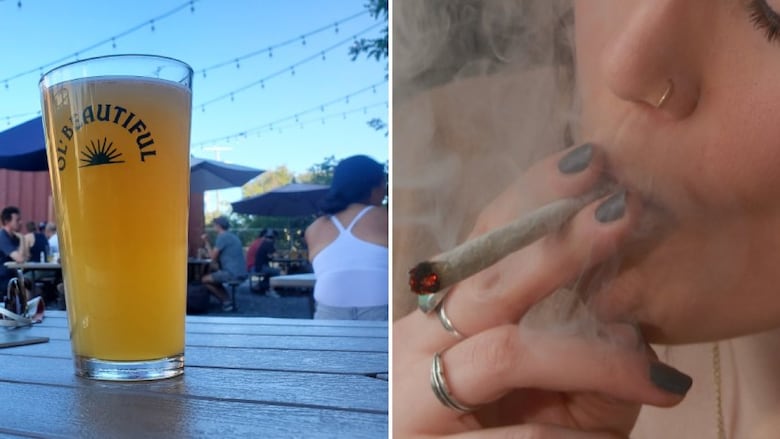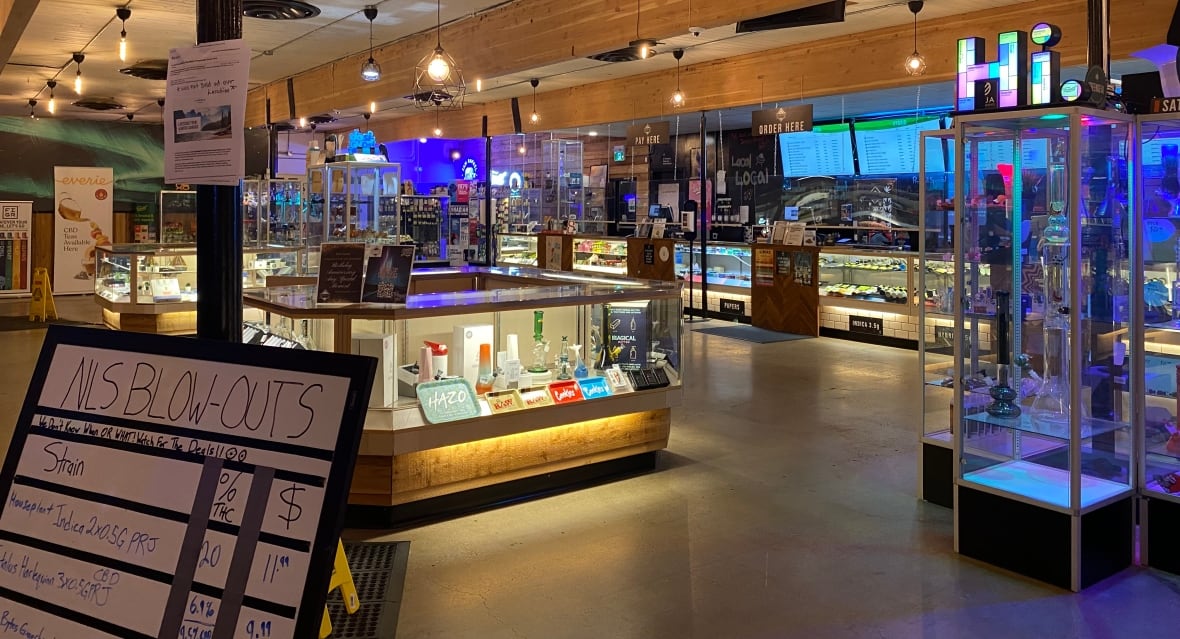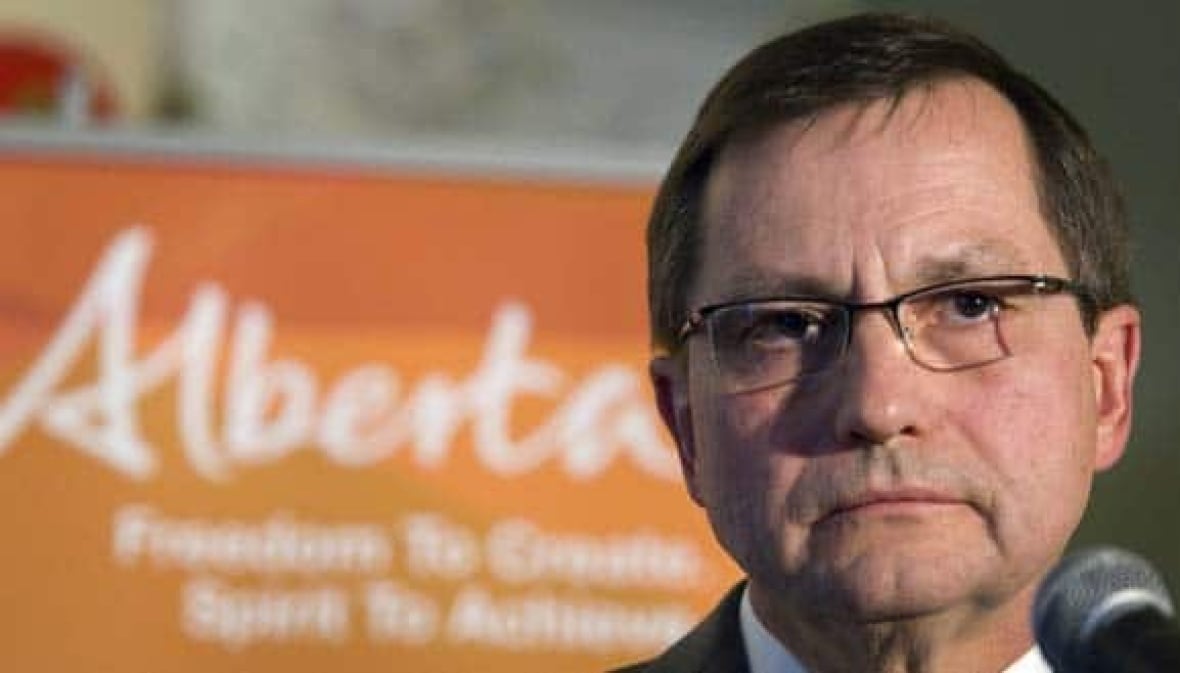Albertans drinking way less booze than they used to, lead the country in cannabis sales
But it's not necessarily because people are simply swapping alcohol for marijuana

It's been well documented by now that Canadians are drinking less than they used to, but no other province has seen a greater reduction than Alberta.
You know those giant bottles of vodka you can get at Costco? The 4.5-litre ones? That's how much less booze the average Albertan drank last year, compared to how much they drank in 2008.
Put another way: 107 fewer beers, per person, per year.
Back at its peak in 2008, Alberta led all provinces in drinking, with 9.7 litres of pure alcohol consumed per person aged 15 and over.
It has since relinquished that title to Newfoundland and Labrador, which last year led the country at 8.3 litres per person.
Alberta rang in at 7.6 litres per person last year, a decline of 1.9 litres from its peak consumption. That ties it with Saskatchewan for the largest decline from peak in the two decades' worth of data tracked by Statistics Canada.
(You might be wondering: Why is age 15 used for the per-capita calculation, instead of 18, the legal drinking age? Statistics Canada has adopted this cutoff as it's the standard used internationally for per-capita alcohol sales.)
Sky-high cannabis sales
At the same time, cannabis sales in Alberta have been on the rise. They've grown in every year that Statistics Canada has tracked this data.
Albertans led the country in legal cannabis consumption by a substantial margin last year, with an average of $248 spent per person of legal age to buy it.
The next closest province was Saskatchewan, at $205.
Quebec saw the least in cannabis sales, at just $96 per person.
It might seem easy to connect the dots here and assume Albertans are drinking less because they're consuming more cannabis instead, but it's not quite so simple to draw a one-to-one connection between the two trends, says Michael Armstrong, a professor at Brock University's Goodman School of Business, whose research has focused on this topic.
Looking at the big-picture numbers, he says there "was no obvious, sudden drop" in alcohol consumption once cannabis was legalized in Canada in 2018.
"No large number of Canadians suddenly said, 'Hey, I'm going to start smoking joints instead of drinking beer,'" Armstrong said.
He believes Alberta's sky-high sales of legal weed is more related to the sheer number of stores in this province.

"Alberta was ahead of most other provinces on store openings and also therefore on sales," Armstrong said.
"For a while in 2019-2020, it had more stores than all other provinces combined. It currently has the third-largest number of stores per capita, only slightly behind Manitoba and Saskatchewan; it has about 12 times the retail density of Quebec."
Armstrong believes the decline in drinking is more complicated. Because alcohol is much more of an established industry, he says it's hard to pinpoint one dominant factor behind the decline.
Rather, he says, there are "many individual factors" at play.
Culture, health and non-alcoholic options
Many of these factors are not unique to Alberta.
Young adults, in particular, appear to be drinking less, in part due to the cost of alcohol and in part due to shifting norms in drinking culture.
Then there's the recently revamped guidance from the Canadian Centre on Substance Use and Addiction, which set much lower thresholds for low-risk drinking than had previously been advised by Health Canada.
There was a spike in alcohol consumption during the first year of the COVID-19 pandemic but, ever since, drinking has generally been on the decline.
This has coincided with the wider availability of non-alcoholic beers, wines and "mocktails." A recent report from NielsenIQ, a consumer intelligence firm, found annual sales of non-alcoholic beverages in Canada had surged to $199 million last year year, up from $137 million two years prior.
"As consumers increasingly prioritize wellness and moderation in their daily routines, non-alcohol products have become an appealing choice for those seeking to incorporate it into their alcohol-consumption habits," the report reads.
That's certainly been a factor for Nikki Guilcher, a Calgary resident who says the quality and diversity of non-alcoholic options has greatly improved.
She says both she and her husband have been drinking less traditional beer and more non-alcoholic beer lately, and it's a trend among a group of women she hikes with, as well.
"At the top of the mountain we'll have a drink and usually at least half of us have got a non-alcoholic beer," Guilcher said.
It's a similar story for Calgarian Kent Vuong.
"I'm turning 41 pretty soon and I don't know if it's just an age thing but ... I feel a lot more bloated and it gives me headaches, like after a single drink," he said.
"And when I'm out socializing with people, I'll just trend toward having a non-alcoholic beer."
Price and future consumers
The decline in drinking in Alberta long predates the rise in non-alcoholic options, however.
Apart from the pandemic bump in 2020, alcohol consumption has been generally trending downward since its peak in 2008.
That's also the year Alberta introduced a mandatory minimum drink price at licensed establishments.
The prices may seem quaint by today's standards, but the 2008 law set a floor of $1.75 for a five-ounce glass of wine, $2.75 for a regular-sized can of beer and $3.20 for a pint.

Consumers have continued to pay more and more for booze ever since, which Armstrong noted is not the case for cannabis, which began being sold legally in late 2018.
From December 2018 to May 2025, he said, alcohol prices in Alberta have grown by 14 per cent, while cannabis prices have actually declined by 38 per cent.
Today, he said, "the price of an intoxicated evening" on cannabis is far lower than what it would cost to get a similar buzz from alcohol.
And while he said there's no strong evidence to date that people are switching from alcohol to cannabis in large numbers, Armstrong wonders if that will start to change in the future, as children who grew up with both substances being legal enter into adulthood.
"I think what we will see is not a big jump of current drinkers switching to cannabis, as much as future consumers choosing cannabis who otherwise would have chosen alcohol," he said.

